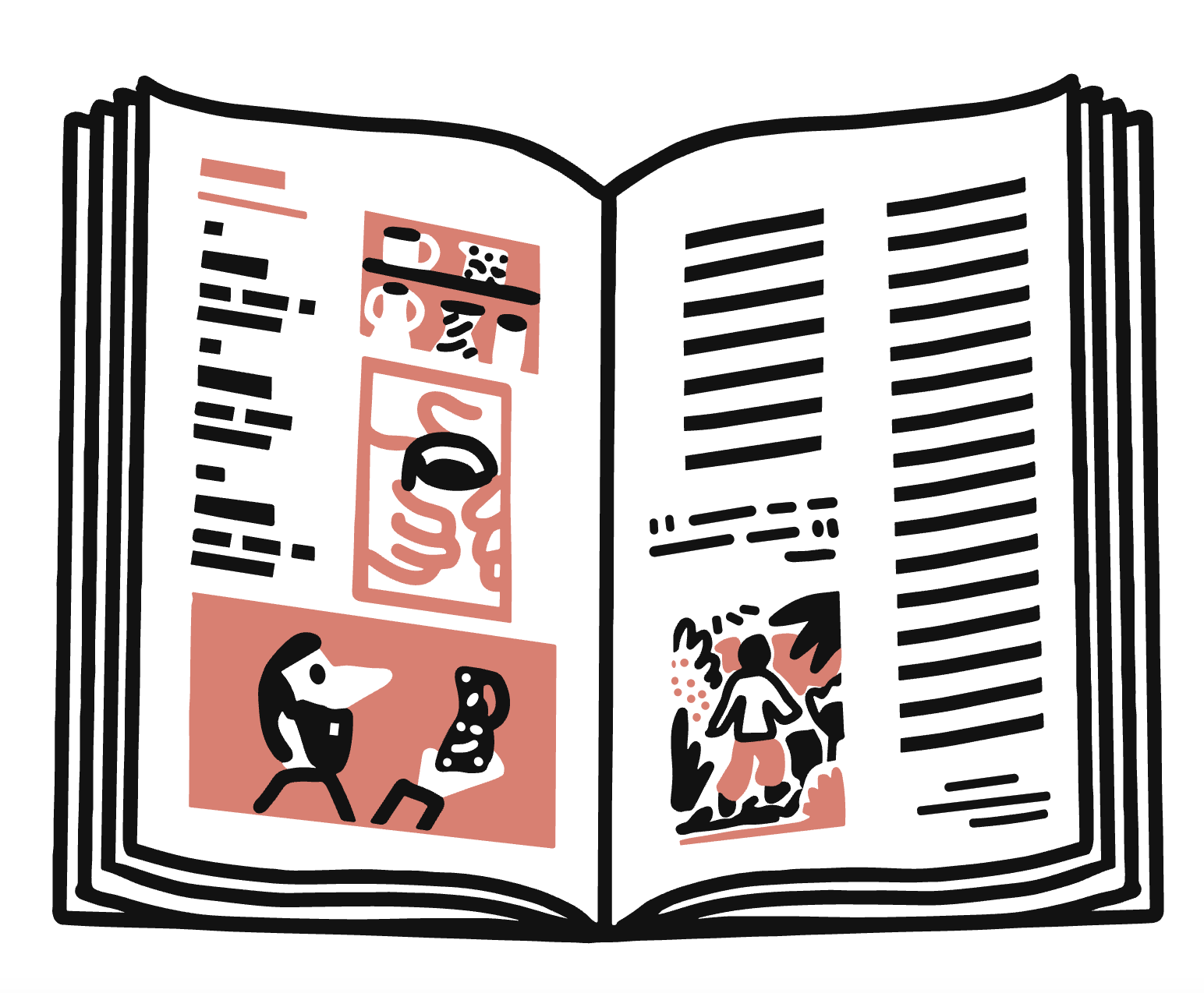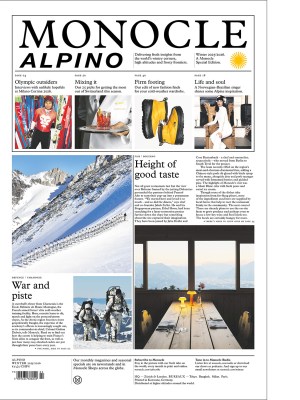Monocle’s rundown of the top 20 thrilling new design discoveries to experience now
Showcasing the best new wine bars, hotels, offices, retail openings and urbanism projects. Plus: We visit the restored Eames House in Los Angeles and catch a cogwheel railway in Austria.
1.
Centre de Congrès
Rabat
At the heart of the Université Mohammed VI Polytechnique campus in Rabat is a conference centre that combines grandeur with a warm welcome and the spirit of intellectual inquiry.

Conference centres can be sterile, unimaginative spaces. An outstanding exception is the new Centre de Congrès on the Université Mohammed VI Polytechnique campus in Rabat. Designed by Barcelona-based Bofill Taller de Arquitectura, it’s a benchmark for the creation of inspiring meeting spaces. While the building’s exterior – with its sweeping stone arches and grand, angular porticoes – makes a striking impression, its interiors are calm and welcoming. The auditorium has deep emerald walls and matching upholstered chairs, with the stage sitting beneath a white domed skylight, which diffuses a gentle glow in the space. The result is a facility that’s not only capable of hosting events of all kinds, from industry conferences to public performances, but quietly elevates campus life.
About Bofill:
Catalan architect Ricardo Bofill founded his practice, Taller de Arquitectura, in 1963, alongside a creative team of architects and engineers but also poets, philosophers and filmmakers. Through this unconventional firm, Bofill helped to shape the postmodern architectural landscape in Spain with a socially minded and colourful approach to design.
2.
Space House
London
The eye-catching, Grade II-listed former home of the UK’s Civil Aviation Authority is now flying high – revived after a three-year revamp that has brought it firmly into the future, deliberately flaunting its classic brutalist features.

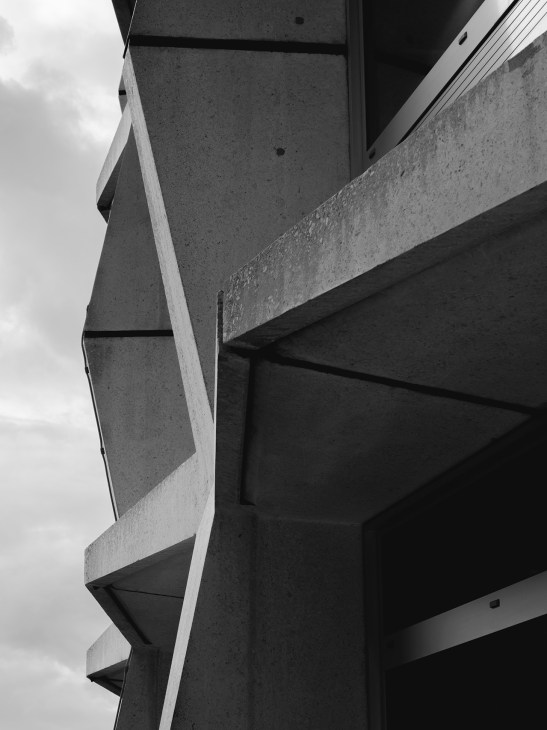
On the fringes of London’s Covent Garden, amid an entanglement of retailers and university buildings, stands Space House – a monolithic, beehive-like 16-storey building. Though it’s hard to comprehend today, the towering brutalist office block was largely overlooked by the public’s undiscerning eye when the building was completed in 1968.
It was architect George Marsh, who was then working at R Seifert and Partners, who radicalised this plot of land. Marsh and his team set out to create a structure with a circular floorplate and 360-degree views that stretch from the Houses of Parliament and the Thames to the BT Tower in Fitzrovia. The result was a concrete behemoth that was in keeping with the period’s burgeoning brutalist movement (think the now-iconic Barbican housing estate in central London and the National Theatre on the South Bank).
From 1975, Space Home served as the home of the UK’s Civil Aviation Authority. But when the government body vacated the premises at the end of its lease in 2019, it was time for a pep up. Property developer Seaforth Land obliged when it purchased Space House in 2022. “The building is magnetic – there’s an incredible optimism in the architecture, almost absorbed by the future-facing sentiment of the period,” says Tyler Goodwin, Seaforth Land’s CEO. “It was an opportunity that we couldn’t pass up. We wanted to maintain that beauty, which is far more appreciated now than it was then.”
When it came to the three-year renovation, the building’s Grade-II status and 23,700 sq m of floor space meant that careful consideration of the existing structure was paramount. Squire & Partners, the architecture firm leading the redesign, shifted the main entrance to create a grander, more welcoming south-facing foyer. New lifts with fluted-concrete interiors were designed in keeping with the building’s visual language. Sustainable implementations saw a complete overhaul of its internal heating and cooling systems to meet modern standards. “On a project such as this, it’s the authenticity that’s important – uncovering it and then celebrating it,” says Goodwin. “That’s the real joy of refreshing original properties.”
spacehouse.london
Brutalist Britain:
The UK’s love affair with concrete dates back to the 1950s, when a postwar reconstruction effort called for a type of architecture that was low-cost and utilitarian. Thus emerged brutalism, a style that evokes grey, bare-bones and angular façades – and continues to polarise popular opinion.
3.
PAL 1 BT by Tivoli Audio
Boston
A charming throwback to a simpler time that’s packed with modern features.

Want to stay in the know with a podcast or play the latest tunes on the go? Then Boston-based Tivoli Audio’s portable Pal 1 BT radio is your ideal companion.
Though it evokes the reassuring solidity and feel of a 1950s wireless, it doesn’t skimp on technological prowess. This new iteration of the design features both a Bluetooth-supported speaker and a DAB and FM radio, all while offering a well-balanced sound. It’s available in a range of colourways, including this particularly loud yellow – a reminder that great sound is worth shouting about.
tivoliaudio.com
4.
Eames House
Los Angeles
Having survived January’s Los Angeles wildfires, the mid-century home of Charles and Ray Eames has reopened to visitors – and now offers access to the designers’ studio.

The wildfires that ravaged LA came perilously close to destroying the Eames House – the former home of mid-century designers Charles and Ray Eames and now a museum. After avoiding catastrophe and undergoing smoke restoration, it’s ready to welcome visitors once again. For the first time in its 76-year history, this includes the adjacent Eames Studio, where Charles and Ray worked on everything from furniture prototypes to film editing. “People know them mostly for their chair designs but by coming here you also learn that they were graphic designers, artists, industrial designers and filmmakers,” says Eames Demetrios, the designers’ grandson.
eamesfoundation.org
5.
Golden Avenue
Brisbane
A new multi-level restaurant by J.AR Office transports the cool and calm of a Middle Eastern courtyard to the heart of Brisbane’s commercial district, serving as a lush oasis with its climate-responsive design.
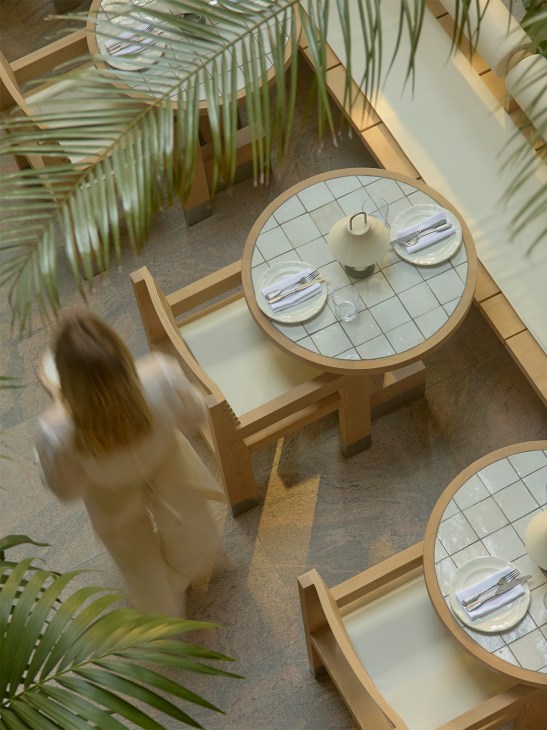
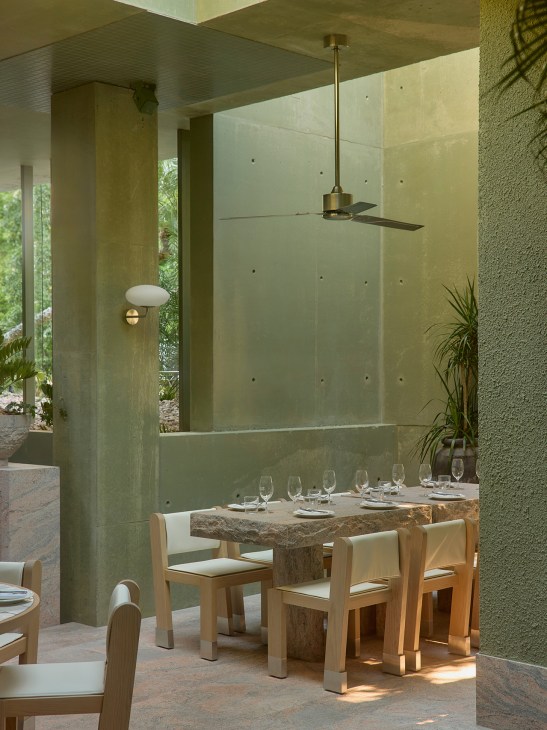
Designed by architects J.AR Office, Golden Avenue is a new restaurant from Brisbane’s Anyday group. Its defining feature is a central space with an adjustable roof and shutters that let in sunshine on cool days and diffuse heat when it’s warm. “In Middle Eastern architecture, this courtyard typology is valued for the air, light and refuge that it provides,” says J.AR Office’s Jared Webb. Combined with the building’s thermal mass, additional shading and passive air circulation, it ensures that the restaurant doesn’t have to rely on air conditioning. “We wanted to emphasise the feeling of being outdoors and embrace Brisbane’s climate,” says Webb.
anyday.com.au
6.
Los Angeles Bus Shelter
Los Angeles
The bus shelter has been given a long-overdue revamp, offering real-time arrivals information, plus some very welcome shade.

“Bus shelters have long been an underappreciated feature of city streets. Now, Los Angeles is tapping their potential with a network of modular bus stops inspired by Californian modernism. Designed by Skidmore, Owings & Merrill with the help of Designworks, Studioneleven and Tranzito-Vector, the shelters serve various needs. Every model features digital displays with real-time arrival times, weather information and alerts. Some will also feature e-scooter racks and e-lockers.
So far, the city has installed 150 units, with a total of 3,000 planned over the next decade. As climate change drives temperatures to unprecedented heights, the structures also provide shade in areas that lack tree cover.
som.com
Olympic effort:
Ex-Los Angeles mayor Eric Garcetti is championing 28 infrastructure projects set to be delivered before the city hosts the 2028 Summer Olympics and Paralympics.
7.
Miramonti Boutique Hotel
Merano
The beloved hotel’s new cabins promise a soothing stay among the trees.
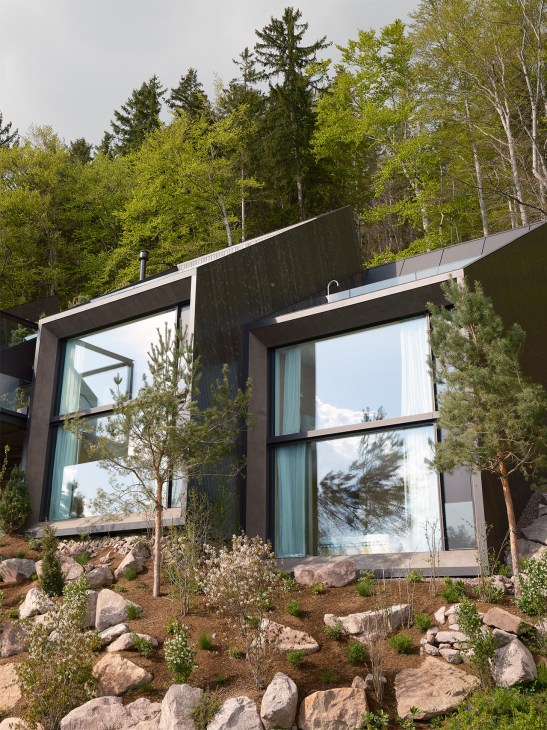
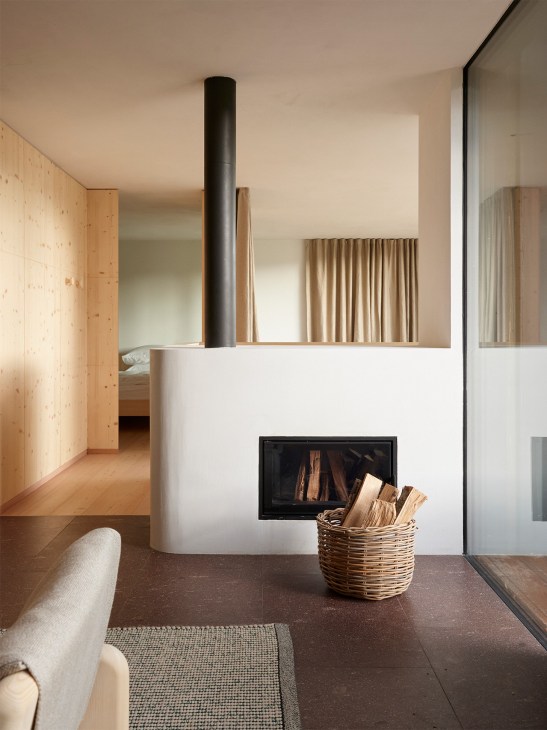
Merano’s Miramonti Boutique Hotel has expanded its offering with three new cabins adjacent to the property, renovated under the direction of designer Harry Thaler. The project, he says, is about “simplicity, quiet and character. I developed Monti as a contemporary forest retreat that respects the heritage and the unique energy of the place.” To bring the project to life, Thaler worked with Tara architects.
The residences are designed to blend with nature: think muted tones, plenty of wood and floor-to-ceiling windows. Best of all, the rooftops feature steel tubs for cold-water therapy and warming wood-fired saunas. “Each house is like a different chapter in the same book,” he says. “It’s a story of retreating into the forest and finding balance.”
hotel-miramonti.com
8.
Valentyns
Köln
Designed by celebrated German architect Thomas van den Valentyn, the Köln-based company’s new workspace offers well-appointed rooms, evening wellness options and plenty of natural light. Small wonder the employees seldom take sick days…
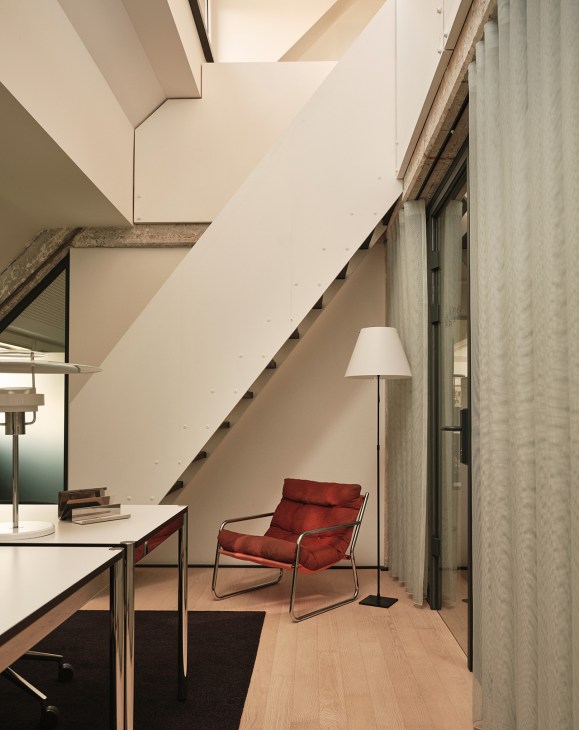
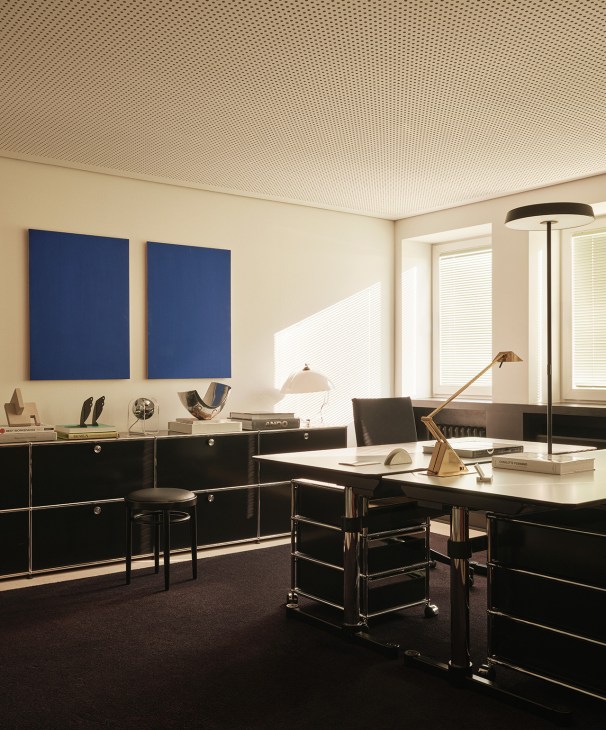
Architects and designers don’t typically utter the words work and wellness in the same breath. But Valentyns’ new office set-up in a 1960s modernist building in Köln proves that this doesn’t have to be the case. Designed by German architect Thomas van den Valentyn – best known for his restoration of Berlin’s Presidential Palace, as well the Beethoven Haus Archive and Chamber Music Hall in Bonn – this workspace overlooking the Rhine riverbank is equal parts business and pleasure.
During the day, members and employees in the 43 private offices can work in well-appointed rooms equipped with pieces by the likes of USM, Le Corbusier and Fritz Hansen. In the evening they can indulge in a host of wellness offerings, from Finnish and infrared saunas to custom-made ice baths and workouts using Technogym kit. Natural light floods most of the building’s spaces, creating an inviting and creatively stimulating atmosphere. It’s the kind of place that feels intimate and welcoming without trying too hard to emulate a home: it’s sleek but not impersonal. Valentyns claims that there has been a 30 per cent decrease in sick days since moving in – a reminder that when it comes to effective design, constructing an environment that makes people feel good is often just as important as prioritising what looks best.
valentyns.com
Thomas van den Valentyn:
The Köln-based architect founded his namesake firm more than three decades ago, after studying under famed Austrian architect Hans Hollein at the Academy of Arts in Düsseldorf. Van den Valentyn has designed buildings around Germany, from the Max Ernst Museum in Brühl to the T-Home Campus office space in Bonn.
9.
Barista by Monoware
London
Upgrade your home-brewed espresso with this collection of UK-designed, Portuguese-made stoneware coffee cups.

“Looking for the kind of crockery worthy of the buzziest cafés? Then take your pick from London brand Monoware’s latest collection, made in Portugal from matte glazed stoneware. The cups’ soft, round shapes make them an attractive addition to any kitchen.
monoware.com
About Monoware:
Founded in 2019 by Swiss creative consultant Daniel Baer, Monoware creates tableware with enduring appeal.
10.
Surat Flyover
Surat, India
A neglected space under a flyover has been transformed into a sports facility that’s accessible to all.

Like many cities, Surat in the Indian state of Gujarat has plenty of underused urban pockets and not enough accessible spaces for recreation. To address this, the Surat Municipal Corporation asked architecture firm Aangan Collaborative to reimagine the void beneath a flyover as a sports facility and community hub. The design unfolds along a pedestrian spine, with a series of enclosed micro-cement courts offering durable, high-performance surfaces for various activities. Encased within a skin of aluminium mesh and polycarbonate, the facility offers security and acoustic insulation from traffic.
“The project is a break from the exclusivity of clubs and gated institutions, making sports accessible to everyone,” says Niti Shah, a senior associate architect at Aangan Collaborative. “The city’s urban voids hold immense potential to be transformed into vibrant spaces. The project is a prototype demonstrating how Indian cities can make the most of them.”
aanganarchitects.org
11.
Casa Montelongo
Fuerteventura, Canary Islands
An artfully designed micro hotel in Fuerteventura where tradition meets modernity offers the chance to slow down and connect with the island’s charming vernacular.
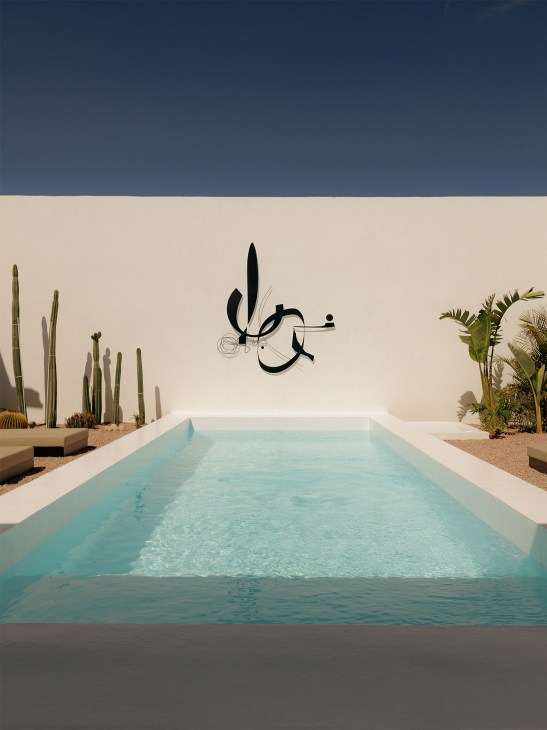
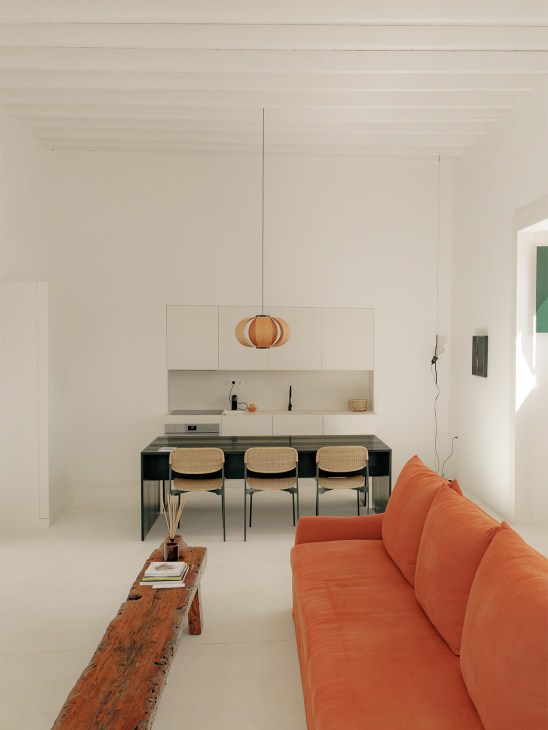
Close to the northern shores of Fuerteventura, a 19th-century family home in the town of La Oliva is enjoying a renewed purpose as a two-suite micro hotel. Casa Montelongo, designed by Lanzarote-born and Berlin-based architect Néstor Pérez Batista, reinterprets Canarian vernacular with a deft, subtle touch. While Fuerteventura features no shortage of sprawling resort complexes, Casa Montelongo’s revival centres on the blending of traditional island materials – volcanic stone, lime and clay – with contemporary elements. Skylights and clean-lined interiors seamlessly integrate with thick stone walls and wood accents that regulate heat while creating a tactile, inviting atmosphere.
Guests are gently nudged to engage with the architecture as much as the island. “We want Casa Montelongo to become an artful alternative to generic, mass hospitality,” says Batista. As a tasteful, small-scale counterweight to other hotels on the island, the casa quietly proves that slowness and cultural memory can still set the pace.
casamontelongo.com
12.
Folding Torch by Snowpeak
Japan
Going on an excursion into the great outdoors? Then go prepared with this elegant torch that combines utility with a minimalist Japanese aesthetic.

Planning on pitching a tent but determined not to sacrifice style for unwieldy camping supplies? Japanese brand Snow Peak distils generations of technical mountaineering know-how into this compact folding torch that screws straight onto a portable gas canister. With an attractive natural wood handle and a robust stainless-steel frame, this flambeau will add plenty of fuel to any campfire.
snowpeak.com
13.
Gunia Project
Kyiv
For its new shop in the Ukrainian capital, homeware brand Gunia has created an immersive space that incorporates elements of its location with its own gentle outlook.
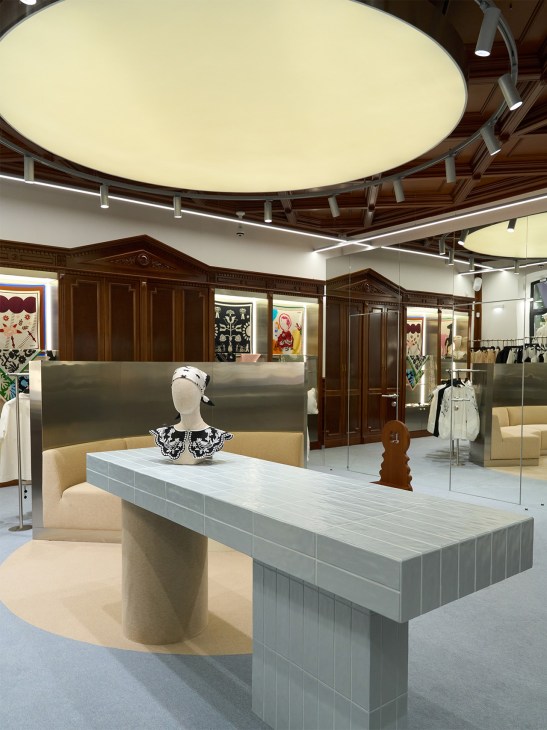
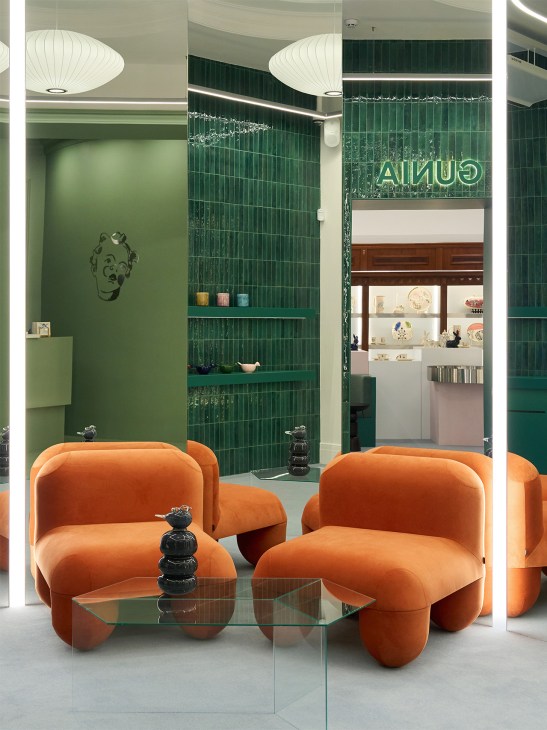
For its new shop in Kyiv’s Golden Gate district, fashion and homeware brand Gunia decided to take a fresh approach. “We wanted to create a space where all of the aspects of our brand could coexist,” says Maria Gavryliuk, who co-founded the company with Natalia Kamenska in 2018. “It was about immersing visitors in our universe.”
The duo hired Anastasiia Tempynska’s architecture studio Temp Project. “The inspiration was Gunia itself,” says Tempynska. “The brand evokes a sense of innocence, like the feeling of drinking tea in a garden or walking through a quiet village.” Inside the former Panamanian consulate building, carved wooden panelling is offset by green tiling and soft blue carpets, while metal and glass contrast with the pastel effect. The shop also brings in aspects of the neighbourhood. “The wood’s chocolate brown and the blue echo Saint Sophia Cathedral.”
guniaproject.com
14.
Langelinieskuret
Copenhagen
Studio David Thulstrup’s new wine bar, in a landmark 1902 customs building, gives patrons a taste of the site’s rich history.

The Langelinieskuret has long loomed large in the collective memory of Copenhagen’s residents. Designed by architect Vilhelm Dahlerup, the building was completed in 1894. Its 350-metre-long façade and rooftop promenade served as a loading bay for ships transporting goods through the Danish capital’s port until the late 20th century. Now, it has been transformed into an event space and wine bar by development firm Karberghus. “This was originally a very popular place for the public to come and watch the harbour,” says Karberghus’s CEO, Andreas Karberg. “Today it can be a place where people come for a glass of wine after work.”
This vision was brought to life by Copenhagen-based Studio David Thulstrup, which revamped the interiors using materials referencing the building’s existing industrial aesthetic. Polished versions of Ølandstone have been deployed for selected counter tops, patinated steel clads the bar, structural walls have been lime-washed and the existing wooden floor has been retained and stained black.
“I always investigate a place and look at what the building is made from,” says Thulstrup. “I want to see how I can use that materiality in my work.” The Danish architect broke up the building’s cavernous interior by installing hanging panels and screens throughout the space – interventions that didn’t compromise the structural integrity of the listed structure. “We had to protect and celebrate the building mass,” adds Thulstrup. “At the same time, we needed solutions that could ensure that it can function now.”
Other additions by Thulstrup have also enhanced the building’s contemporary functionality. Full-length dark-brown leather curtains add warmth, tactility and acoustic padding, while also concealing wine storage. Font chairs, designed by Thulstrup and produced by Møbel Copenhagen, are upholstered in Savanne brown and burned grey Sørensen leather; these flank smoked grey float glass and Norwegian stone tabletops. It’s a hospitality space that perfectly fits Just Karberg’s brief and stays true to the vision of Dahlerup’s original structure.
davidthulstrup.com
15.
Stainless-steel cutlery from Millimeter Milligram
Seoul
This cutlery set by a South Korean retailer brings plenty of character to the table.

This cutlery set is sure to be a conversation starter at any dinner table. Made from stainless steel, its flat form is reminiscent of the knives, spoons and forks found in first-class cabins during the golden age of aviation: think Raymond Loewy’s mid-century cutlery set for the Concorde or Arne Jacobsen’s work for SAS. Stocked by South Korean retailer Millimeter Milligram, it’ll make a delicious addition to any cutlery drawer.
mmmg.kr
About Millimeter Milligram:
Since 1999, South Korean design brand Millimeter Milligram has upheld the idea that small but carefully designed objects can elevate our daily lives. From ceramic teacups to glass flowerpots, the company manufactures its wares in small ateliers in Seoul’s historic downtown area.
16.
Schafbergbahn Station
St Wolfgang, Austria
Austria’s steepest cogwheel railway has been given an upgrade with the award-winning revamp of a station designed to strengthen the connection between its users and the natural environment.

Best known for its hiking and skiing spots, Schafberg in Salzburg is also home to Austria’s steepest steam-rack railway. The design of its terminus, Schafbergbahn Station in St Wolfgang, recently won a Prix de Versailles architecture award. “I had to google what that was,” says Mario Mischelin, managing director of the railway owners, laughing. “The landscape is protected so we tried to integrate the building with the surroundings,” says Michael Höcketstaller of Salzburg-based practice Dunkelschwarz. The architects created a jagged wood-and-steel roof, breaking up the building’s scale, while installing panoramic windows to take in the grandeur of the landscape.
dunkelschwarz.com
17.
Bidadari Park
Singapore
The reinvention of a park in the city-state has brought residents not only much-needed recreation space but a first-of-its-kind flood defence system.

Singapore’s Bidadari Park was home to a cemetery until the 2000s. Seeking to transform “the former place of rest into a restful place”, design studio CPG Consultants, together with Henning Larsen’s Singapore studio, decided to take a leaf out of AA Milne’s Winnie-the-Pooh stories, says Caijin Huang, its vice-president of architecture. The designers created their own take on its Hundred Acre Wood, implementing play areas, winding boardwalks and log piles that foster a sense of joy and discovery.
The team also enhanced the park’s flood protection, adding terraced wetlands, marshes and an artificial stream, as well as Alkaff Lake, which doubles as a stormwater retention pond. With floods increasingly common, this system is more essential than ever.
cpgconsultants.com.sg; henninglarsen.com
18.
Another Country & Goldfinger
London, United Kingdom
A socially minded union showing the way to a sustainable design future.

British natural furniture brand Another Country recently acquired Goldfinger, a London-based design studio known for bespoke commissions, tree-cycling and community programmes. A reminder that there’s strength in numbers. anothercountry.com; goldfinger.design
19.
Tala Wake lamp
London
Ease into the day with a lamp that adjusts its brightness to your natural circadian rhythms.

Owning the correct bedside lamp can help make getting up in the morning a genuine pleasure. London-based lighting company Tala’s Wake model features a hand-glazed base and a custom-made bulb that mirrors the sun’s luminosity to work with your circadian rhythms. The result? A soothing soft glow in the evening and brighter, energising illumination in the morning, reinforcing your natural sleep patterns. Its distinctive globular design makes it an eye-catching addition to any bedside table.
tala.co.uk
20.
Between the covers
Global
Looking for a deep dive on the work of an outstanding architect or design movement?
Here’s our pick of the bunch.

Published by Park Books, Visiting examines the high-quality affordable housing of mid-century German architects Inken and Hinrich Baller. Also from the Zürich-based publisher is Concéntrico, which documents 10 years of the titular urbanism festival. Oro Editions’ Episodes in Public Architecture by Canadian architect Andrew Frontini is an exploration of civic projects, while City Living from Australia’s Uro focuses on the residences of Melbourne-based developer Neometro. Rounding out the selection is The Complete Work in Progress, a lever-arch file containing sheets celebrating the portfolio of Danish design firm Spacon. The binding method allows it to be updated as the practice grows.
What makes a good design monograph?
Design writing can often feel dry or inaccessible. So what does an exceptional monograph offer? In our opinion: clear text, compelling layouts, and an abundance of sketches, drawings, photos and blueprint illustrations, as well as the odd personal essay and contextualisation within a broader sociopolitical landscape.
